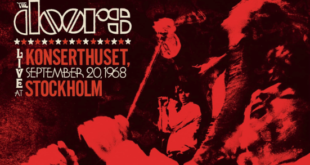There’s nothing quite like the energy of a faculty recital. The artists, in addition to their world-class musicianship, feed off the enthusiasm of their students who’ve come to see and hear them. Music students at a school like Juilliard can’t help taking pride in the excellence of their instructors’ performances, which they feel shine on them and light up their futures.
Such was the energy at Friday night’s concert at Juilliard’s Paul Hall, where four superb musicians played the music of Brahms, Fauré, and contemporary composer Jessie Montgomery with glowing artistry.
Making the Unexpected Seem Inevitable
Brahms’ Sonata in E-flat Major for Viola and Piano, Op. 120, No. 2, is a work from late in the composer’s life and full of ineffable melody. Through that Brahmsian magic that no one has ever quite equalled, its creative complexities seem continuously inevitable. And as a relatively rare feature for the viola, whose middle voice is often non-obvious in an ensemble, it gives a fine instrumentalist an opportunity to stand out.
Hsin-Yun Huang asserted mastery from the start with a woodsy tone, a richly overtoned depth, and a flowing touch in the plainspoken, echt-Romantic first movement with its songlike main theme. Robert McDonald brought clarity and thoughtfulness to the piano part, which grew crowded with energy as the piece developed, merging soulfully with Huang’s sweetness of tone, a sweetness quite distinct from the mezzo of her instrument’s usually more prominent little sister the violin.
“Allegro appassionato” is by no means the typical marking for a sonata’s middle movement. But our Brahms, he would go his own way, for his own reasons. Huang and McDonald attacked this equally melodic movement with grace, finesse, and beautifully controlled elasticity. They even achieved a paradoxical sense of anxiety-free drama in the chorale-like trio section.
The final movement is a fascinatingly original piece disguised as a happy dance. Huang and McDonald conveyed it with vigor, limpidly bringing out the eerily shifting harmonies of the exotic-sounding middle section.
We’re very lucky that Brahms had a warm spot in his heart for the viola, especially considering how closely he was associated with his friend the violinist Joseph Joachim. We’re also lucky to have musicians like Hsin-Yun Huang and Robert McDonald to bring this sonata to life for us.
Silliness and Fun at Juilliard
Jessie Montgomery’s “Duo for Violin and Cello” was an ideal piece to program between the different Romanticisms of Brahms and Fauré. Violinist Catherine Cho and cellist Natasha Brofsky had such evident fun playing its three brief movements. The first, a laughing miniature redolent of folk music, called for herculean cello dexterity, carried off by Brofsky with apparent ease.

Its fun and silliness gave way to stunningly original harmonies in the second movement, which also features impassioned solo parts for both instruments. A pensive, lovely violin melody leads to a return of those amazing pained harmonies; it was hard to believe two instruments were producing that richness.
The final movement joys in a kind of exploded minimalism, its rhythms requiring a perfect synchrony that Cho and Brofsky achieved. Montgomery has become one of my favorite current composers, and this piece from 2015 did nothing to change that.
The Spectrum of Human Experience
All four Juilliard musicians returned to the stage after intermission for Fauré’s Piano Quartet No. 1 in C Minor, Op. 15. The strings play in concert through much of its three movements, leaving the piano to create most of the motile density. The musicians brought out much beauty in the first movement’s almost panicky perpetual motion, with McDonald’s keyboard work especially fluid. The scampering, rhythmically tricky scherzo showcased yet more piano virtuosity. The funereal third movement swells to spasms of sadness, which the quartet depicted with sublime colors. And they delivered a magnificent performance of the finale, a swirling tract that almost can’t contain its flood of emotion.
It was also interesting to note the difference between Brahms’ mature style and that of Fauré’s in his relative youth: the feeling of calm acceptance vs. the troubled tangle. Indeed, music’s power lies in its ability to convey the whole spectrum of human experience, at a stratum deeper than words. The best musicians, whatever the genre, can pick up their instruments, inhabit that world, and inspire their students to do the same, all in the service of keeping the music of the ages alive for the listeners who love and need it.
 Blogcritics The critical lens on today's culture & entertainment
Blogcritics The critical lens on today's culture & entertainment




